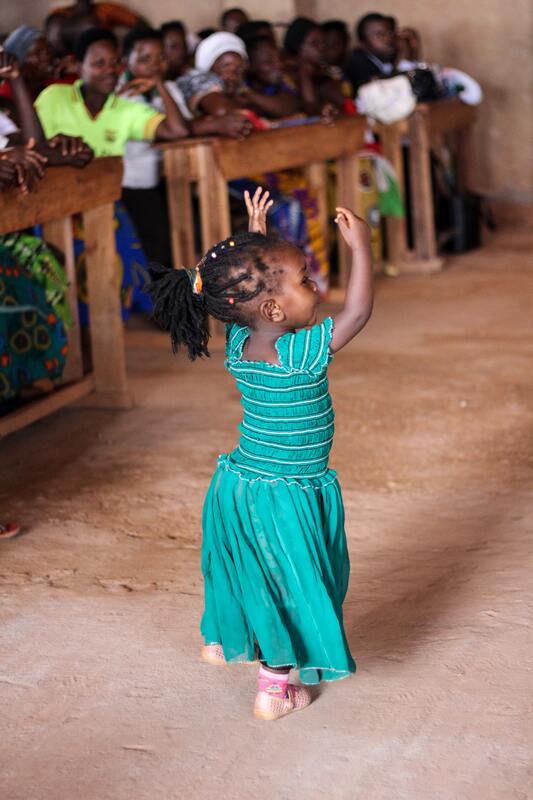|
Natural disasters can bring out the best in humankind as people bond together for the common good. However, the Coronavirus has also given rise to selfish and irrational behaviour as people endeavour to protect themselves and their families. Nations, too, are imposing measures to protect their own citizens with very few attempts at coordinated action across continents. In this article, Tom Elich reflects on the ways that peace and solidarity are embedded in the liturgical action which unites Christian communities around the world. |
Peace and Solidarity
by Tom Elich
Going back some decades, there was often a tension between those who were interested in liturgy and those who immersed themselves in social justice. The former thought the latter mere activists, the latter considered the former remote from the cutting edge of the Christian gospel. Liturgy and social justice of course are not mutually exclusive. In fact, both are utterly necessary dimensions of the Christian life. I would go further and affirm that they are deeply embedded, one in the other.
There is a significant paragraph in the July 2014 Circular Letter of the Congregation of Divine Worship on the Ritual Expression of the Sign of Peace at Mass:
7. The intimate relationship between the lex orandi and the lex credendi must obviously be extended to the lex vivendi. Today, a serious obligation for Catholics in building a more just and peaceful world is accompanied by a deeper understanding of the Christian meaning of peace and this depends largely on the seriousness with which our particular Churches welcome and invoke the gift of peace and express it in the liturgical celebration. Productive steps forward on this matter must be insisted upon and urged because the quality of our eucharistic participation depends upon it, as well as the efficacy of our being joined with those who are ambassadors and builders of peace, as expressed in the Beatitudes.
There is a significant paragraph in the July 2014 Circular Letter of the Congregation of Divine Worship on the Ritual Expression of the Sign of Peace at Mass:
7. The intimate relationship between the lex orandi and the lex credendi must obviously be extended to the lex vivendi. Today, a serious obligation for Catholics in building a more just and peaceful world is accompanied by a deeper understanding of the Christian meaning of peace and this depends largely on the seriousness with which our particular Churches welcome and invoke the gift of peace and express it in the liturgical celebration. Productive steps forward on this matter must be insisted upon and urged because the quality of our eucharistic participation depends upon it, as well as the efficacy of our being joined with those who are ambassadors and builders of peace, as expressed in the Beatitudes.
The first sentence about aligning the way we pray and the way we believe with the way we live is fundamental. The logic of the rest of the paragraph is not entirely clear. It seems to be conjugating three ideas: * building a just and peaceful world (the living), * understanding the Christian meaning of peace (the believing), * invoking and expressing the gift of peace in liturgy (the praying). While the letter does emphasise that it is a serious matter, I am not sure where it presumes we ought to begin. Whether we go from the liturgy to action in the world or vice versa, the final sentence suggests that the three must go hand in hand; with this I concur.
The brief letter is not much help in articulating the Christian meaning of peace: it just makes a couple of references to Christ in his Paschal Mystery as our peace. We can turn to the Second Vatican Council for amplification: Peace on earth, which flows from the love of one’s neighbour, symbolises and has its origin in the peace of Christ who proceeds from God the Father. Christ, the Word made flesh, the prince of peace, reconciled all people to God by the cross, and, restoring the unity of all in one people and one body, he abolished hatred in his own flesh. Having been lifted up through the resurrection he poured forth the Spirit of love into people’s hearts. Therefore all Christians are urged to speak the truth in love and join with all peace-loving people in pleading for peace and trying to achieve it. (Gaudium et Spes 78). Peace is grounded in the Christian commandment to love one another and is intimately linked with the kingdom of justice Christ established in his death and resurrection.
This is not just a theology which leads to action. It is precisely here that the liturgy operates. At our Baptism, we are made one with Christ and so become members of the Church, the Body of Christ. At Confirmation, we are sealed with the Gift of the Holy Spirit and the bishop says, Peace be with you. At the Eucharist, we enter into the sacrifice of the cross, we are swept up in Christ’s great act of reconciliation and, in our communion, catch a glimpse of the unending banquet of unity in a new heaven and a new earth, where the fullness of your peace will shine forth in Christ Jesus our Lord (EP Reconciliation II).
Emphasising the liturgy as a bond of Christian love and peace in no way reduces it to a mere expression of human community, for the liturgy is clearly grounded in the action of Christ our Saviour. The sign of peace in the liturgy is more than a smile and a handshake with those close by. It acknowledges Christ the source of our reconciliation, unity and peace. Maintain the unity of the Spirit in the bond of peace. There is one Body and one Spirit, just as you were called to one hope when you were called: one Lord, one faith, one baptism; one God and Father of all, who is above all and through all and in all (Eph 4:3-6).
We understand the liturgy as the action of the Christus totus, the whole Church community, the Body of Christ united with its Head (CCC 1136). This means not just the liturgical assembly which is a visible expression of the whole Church, but rather, in its deepest reality, the entire family of the baptised.
This puts us into a profound solidarity with Christian communities in every part of the world when we gather at the Lord’s table. As we profess our unity in the Lord, the Christian communities of every war-ravaged corner of the globe stand with us at the altar. We cannot engage honestly in such a liturgical act without being peacemakers in our Christian lives, advocating and making peace.
Then, from the table, we are sent out: Go in peace! Here is the link.
These few words connect our believing and praying with our mode of living.
Rev Dr Tom Elich is Director of Liturgy Brisbane and Parish Priest of Sts Peter and Paul at Bulimba.
This article first appeared in Liturgy News 45(1)
Images from Unsplash and Pixabay. Used under license/with permission.
This article first appeared in Liturgy News 45(1)
Images from Unsplash and Pixabay. Used under license/with permission.





